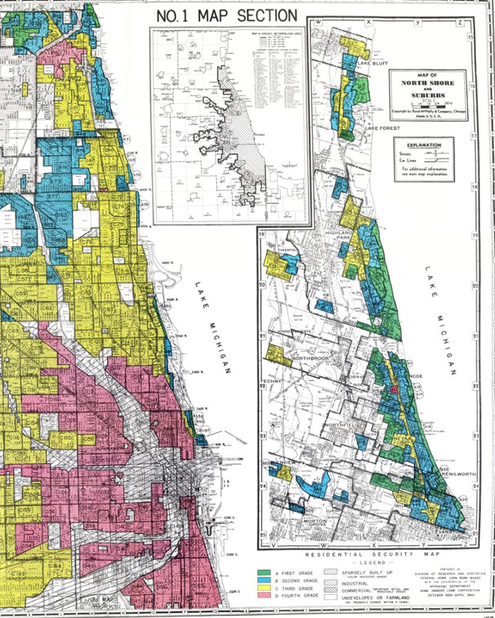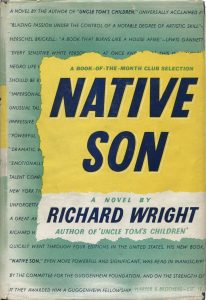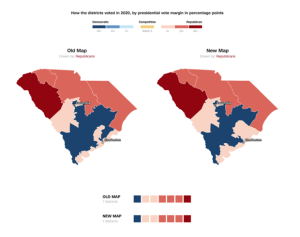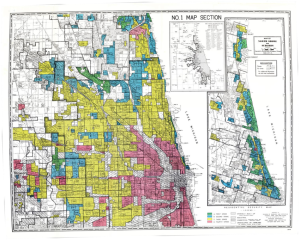
The Everlasting Impact of Redlining and Gerrymandering
By Haowen Yan, 2024 Intern at March On Foundation
Hello, my name is Haowen and I am a senior at Stuyvesant High School, located in the Tribeca area of lower Manhattan. I plan to major in business once I enter undergrad, but I never shy away from spreading my message to the world. During my high school experience, I interned at Amerasia Bank in my Sophomore year as the intern head of the small ,family-owned loan business. One year later I found March on Foundation through Futures and Options, where I continued my journey to discuss hidden figures in our history and fiscal sponsorships relating to the nonprofit organization. In the future, I plan to pursue a career in either accounting, data analytics, or business administration that sparks from my business degree in college.
~~~~~~~~~~~~~~~~~~~~~~~~~~~~~~~~~~~~~~~~~~~~~~~~~~~~~~~~~~~~~~~~
I was born in Shanghai, China, and immigrated to America as a first generation student at 3-years-old. Growing up, I was always confused about the topic of discrimination, as my parents would give offenders the benefit of the doubt, and I believed that they would know better.
However, I soon realized that actions directly corresponding to race are motivated with an intent far more cruel than the bite of a canine, but one of a lion.
My steps after becoming a high school student forced me outside of my comfort zone. I took “untraditional classes” during my senior year as a prospective business major, and I was the first set of students at my school to take the new AP African American Studies course.
Mr. Nieves, my teacher for that class, was the previous AP Language and Composition teacher for over 10 years of his career. He spent the summer planning this new course that enlightened students like myself to topics that I have never questioned. With limited knowledge about American history prior to the course, I thought that the classes would be stale and uninteresting, but I was horribly wrong.

Coupled with my AP Language and Composition taught by Ms. Yang, I was introduced to the famous novel Native Son by Richard Wright. It was only from there that I drew connections where racial discrimination had swallowed up the lives of many people of color, from the basics of living with redlining, to the political and even psychological aspects derived from gerrymandering and the double consciousness…
The character that caught my eye was Bigger Thomas, the main character of Native Son. For those who have not read the novel, the plot is quite challenging: a Black main character living in the slums of Chicago manages to secure a job with a white philanthropist, “accidentally” chokes his daughter to death with a pillow when he was almost caught assaulting her, attempts to burn her corpse, brutally murders his girlfriend in an attempt to hide the spread of information, and eventually gets caught by the cops and given the death penalty while sobbing on the floor of the courtroom.
From my retelling of events, he sounds like the textbook “criminal,” right?
Well, there is always more to the story. Bigger was living in the slums because of the white philanthropist he worked for, who was giving less funding to his designated neighborhood filled with majority Black families. This was redlining, a historically racial form of housing segregation that resulted from the New Deal era of the 1930s… Bigger and many others lived within the red section of maps that were predominantly filled with minority groups (mostly Black at the time). They were considered to be “loan unworthy” to the Federal House Administration, who at the time favored white consumers – which is evident at the beginning of the novel where his home was described as dirty and filled with rats.
Bigger became what I would call the “anti-hero” in the story, in which he amongst all the other people in this impoverished world decided to speak out and commit actions against the so-called “sea of white”, as Wright would say. In fact, Wright purposefully portrayed Bigger as a controversial character to expose aspects of white society during that time period as a form of bigotry, and to show how Black criminalization is not necessarily of choice, but of fight or flight (however, that does not necessarily justify his actions).
The novel is a service to society as Wright depicts, to be a lesson that the stereotypical “actions” of African Americans were soon followed after facing white supremacy and segregation. The historical background and situation he was placed in was the catalyst to the actions that soon followed and highlights the racial discrimination against men like Bigger who essentially lived up to the “white gaze” and committed a crime that the white men expected of him anyway: assault.
Two examples of redlined maps of Chicago by the Homeowner’s Loan Corporation (HOLC). The different colors indicate the “loan worthiness” of the labeled area. Green indicated the most desirability with “Grade A”; blue indicates “Grade B”; yellow represents “Grade C”; and, as the definition implies, neighborhoods in red are considered the least favorable. (No. 1 Map Section from Frontiers in Public Health; No. 2 Map Section from South Side Weekly).
Native Son attempts to utilize the racialization of Black people to utterly expose the nonsensical opinions placed upon this group of people, and if not for the supremacy of the white philanthropists, such as Mr. and Mrs. Dalton, the story might have turned out quite differently with Bigger. The aspects of the book quite noticeably spark tension from both white and Black communities, for the sake of demonstrating that racial inequality sparks these issues, as we are “repeating history.”
Bigger’s living conditions were horrendous, but not abnormal for the time. According to the National Community Reinvestment Coalition, 8.25 million people live in what were redlined communities today according to the 2020 census data, showing how many African Americans faced the same fate of injustice, housing, and redline statuses. Even though the Fair Housing Act was passed in 1968, it was too late by then. The everlasting impact of redlining digs much deeper than the color of one’s skin – it harms generations.

African Americans across the nation face neighborhoods deprived of basic grocery stores and properly facilitated buildings. The generational wealth gap between the wealthy white communities and redlined ones closes doors of opportunity for African Americans to find education or even, at times, means of survival.
What is most infuriating about redlining and other racial injustices is that some politicians and people in certain communities attempt to cover up actions that are quite literally the definition of redlining. The argument such politicians present is that within the historical circumstances where redlining was instituted, market efficiency and social context were needed to maintain social order. They argue that in order to prevent enraging white communities, African Americans were separated from them to avoid further community disputes (which was entirely debunked by further researching scholars, such as Glenn Loury and David E. Kaiser).
The excuse that redlining was a means to maintain the social dynamic of segregation between white and Black folks, and create targeting markets for those sets of communities, is an utter cover-up for the racially motivated reasons behind it.
However, redlining is not the only case of geographically singling out Black communities: gerrymandering is equally destructive. Gerrymandering is the manipulation of borders between political districts within states to benefit one political party or the other.
Typically, one would assume that legislative districts would be drawn to form similarly-looking shapes cut evenly into different segments. With gerrymandering, however, its intention becomes obvious. See, gerrymandering causes divisions of “political districts” to clump a large majority of voters from one political party to allow the other party to win the votes for the rest of the districts.
Interestingly enough, many politicians deem that modern forms of “gerrymandering” are not racially motivated, while coincidentally separating the districts oddly by race. For instance, just over 2 months ago, the Supreme Court rejected accusations of gerrymandering in South Carolina. They determined that “race was not a factor in creating District 1”. This is in spite of thousands of Charlestonians, who were mostly Black, apparently being removed from other voter districts and squished together alongside District 1, which was already a historically Black-dominated congressional district.
As demonstrated in the following image, the blue and pale shaded areas were substantially different from one another. The image on the right was the one that was ultimately allowed by the Supreme Court, even though African Americans make up 25% of the population in South Carolina, as the map singles out Charleston (pale in the bottom right corner).

Map courtesy of Janie Boschma, Renée Rigdon, Byron Manley, Ethan Cohen, Melissa DePalo, Eleanor Stubbs and Christopher Hickey for CNN.
Another case appeared in May, where federal court judges ruled that Louisiana could not take the updated and legislature-authorized voter map, which happened to establish an additional majority-Black district.
For years, African Americans across the different states have fought for more representation in districts, and here it is once again where they get shut down by the political system that is attempting to dilute Black voting powers indirectly.
The most concerning part of gerrymandering is its threat to the legitimacy of the American system, in which “racial justice” is hoped for and yet ignored when it matters most. Steps towards equality have been initiated but never followed through on the political end, and as a country based upon the status of freedom, we have utterly failed to meet our own standards for ourselves.

The legacy of redlining and gerrymandering are only two of the many forms of system racism that I am focusing on, where Black communities forever feel that they are being pushed back by the opposing force of society. This ultimately leads to a lack of resources. Crime soon follows.
However, solutions to these issues will take additional steps than initially hoped for, including stepping up against racial issues and successfully getting legal challenges like those from South Carolina and Louisiana through court, a challenge that we have been struggling with for hundreds of years in our history. Although it is one idea, this mere concept is taking us back in time, “turning back the clock” when we constantly repeat our past mistakes as a nation.
This topic in itself is sensitive, but I think that is why we have to talk about it. Like myself, I think others should be able to step out of their comfort zones and discuss modern issues such as redlining and gerrymandering that are actively causing the separation of racial groups.
I have seen the effects of these racial segregation methods and met those impacted by them, where my friends would often not have as many opportunities resource-wise. At times, we realized that what we thought of as “normal” would be considered a result of these generational wealth gaps; one example is thinking thrifting is something that every family does.
These issues are going to continue to be relevant and evolving problems in our nation that need to be addressed sooner rather than later. Similar to Bigger, our actions are the result of our surroundings, which date back in history. I think there is still the ability to fix these current issues, but it will take time. The best we can do is to continue fighting for what we believe is right, and the results will eventually come to us. If someone looks back upon history during the 2020s, I hope that they will be delighted by a new chapter in American history, rather than “weeping” like Bigger did when his destiny was sealed in chaos and destruction.
~~~~~~~~~~~~~~~~~~~~~~~~~~~~~~~~~~~~~~~~~~~~~~~~~~~~~~~~~~~~~~~~~~~~~~~~~~~~~~~~~~~~~~~~~~~~~~~~~~~~~~~~~~~~
Sources
- “Assessing the Legacies of Historical Redlining – Correlations with Measures of Modern Housing Instability”
- Native Son by Richard Wright
- “Redistricting in South Carolina”
- “Social Justice Vocabulary”
- “Supreme Court rejects racial gerrymandering claim in South Carolina”
- “Trump-appointed judges strike down Louisiana map creating another Black voter district”
- “The Truth About Redlining”

